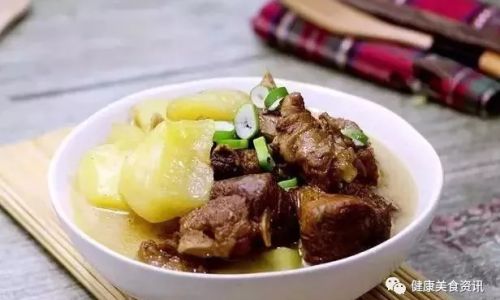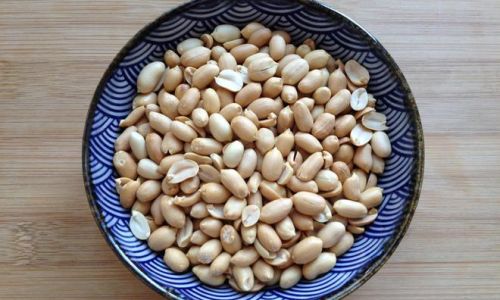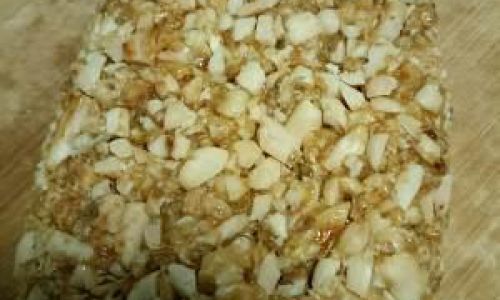Introduction
In the realm of culinary delights, pork stew stands as a timeless classic, celebrated for its rich flavors, tender texture, and comforting aroma. Whether enjoyed as a hearty main course on a chilly evening or as a soul-warming dish at a family gathering, a well-cooked pork stew can elevate any meal to new heights. However, achieving that perfect balance of tenderness and taste can be a challenge for even the most seasoned chefs. This article aims to demystify the process and provide you with a comprehensive guide on how to cook pork stew that is not only tender but also bursting with flavor.

Understanding Pork Cuts
Before diving into the cooking process, it’s crucial to select the right cut of pork. Different cuts have varying textures and fat contents, which significantly impact the final outcome of your stew. For tender and flavorful pork stew, consider using cuts like pork shoulder, pork belly, or pork ribs. These cuts are rich in collagen and fat, which break down during slow cooking, resulting in a moist and tender dish.
- Pork Shoulder: Known for its marbling and flavor, pork shoulder is ideal for long, slow cooking methods. It becomes incredibly tender and flavorful when braised or stewed.
- Pork Belly: This cut is prized for its balance of fat and lean meat, creating a juicy and flavorful stew. The fat melts during cooking, adding richness to the sauce.
- Pork Ribs: Whether spare ribs or baby back ribs, they offer a combination of meat and bone that adds depth to the stew and makes for a satisfying eating experience.
Preparing the Pork
Once you’ve chosen your cut, proper preparation is key. Start by trimming any excess fat, but be mindful not to remove all of it, as some fat is essential for flavor and moisture. Next, season the pork generously. Salt and pepper are staples, but don’t shy away from experimenting with other spices and herbs like garlic powder, paprika, thyme, or rosemary. These will infuse the meat with additional layers of flavor.
Marinating the pork overnight can also work wonders. A simple marinade of olive oil, vinegar, garlic, and herbs can penetrate the meat, enhancing its flavor profile. If time is a constraint, a quick 30-minute marinade will still make a noticeable difference.
Choosing the Right Cooking Pot
The cooking pot you use can make or break your pork stew. A heavy-bottomed pot, such as a Dutch oven or a cast-iron casserole, is ideal. These pots distribute heat evenly and retain it well, ensuring that the pork cooks slowly and evenly. The tight-fitting lid is another plus, as it traps moisture and steam, promoting tenderizing and flavor development.
The Art of Browning
Before adding any liquid, brown the pork pieces on all sides. This not only adds color and depth to the dish but also creates a flavorful fond on the bottom of the pot, which will enrich your stew’s sauce. Use a combination of oil and butter for browning, as butter adds a creamy richness that complements the pork beautifully. Work in batches to avoid overcrowding the pot, which can lead to steaming rather than browning.
Building the Flavor Base
Once the pork is browned, remove it from the pot and set it aside. Now, it’s time to build the flavor base, often referred to as a mirepoix in culinary terms. This typically consists of finely chopped onions, carrots, and celery. Sauté these vegetables until they are soft and translucent, releasing their natural sugars and creating a sweet, savory base for your stew.

Adding aromatics like garlic, bay leaves, and whole peppercorns at this stage further deepens the flavor profile. Deglaze the pot with a liquid such as red wine, beef broth, or even chicken broth, scraping up the fond from the bottom to incorporate all those delicious flavors into your stew.
Slow and Steady Cooking
Return the browned pork to the pot, nestling it among the vegetables. Add enough liquid to just cover the meat, ensuring it’s not submerged. Bring the mixture to a gentle simmer, then reduce the heat to low. The goal is to cook the pork slowly, allowing all the flavors to meld together and the meat to become tender and succulent.
Cooking time can vary depending on the cut and size of the pork pieces, but generally, expect a cooking time of 2 to 4 hours for pork shoulder or ribs, and slightly less for pork belly. Resist the urge to stir too frequently, as this can disrupt the cooking process. Instead, let the stew bubble gently, occasionally checking to ensure it’s not drying out and adjusting the heat as necessary.
Finishing Touches
About 30 minutes before the pork is done, taste the stew and adjust the seasoning. Add more salt and pepper if needed, or perhaps a splash of vinegar or lemon juice to brighten the flavors. If the stew seems too thick, add a bit more broth or wine. Conversely, if it’s too thin, let it simmer uncovered for a few more minutes to reduce.
For an added touch of elegance, consider finishing the stew with a dollop of cream or a sprinkle of fresh herbs like parsley, chives, or thyme. These not only enhance the visual appeal but also add a fresh, aromatic finish to each bite.
Serving and Enjoying
Serve your pork stew over a bed of creamy mashed potatoes, buttery noodles, or crusty bread to soak up every last drop of the flavorful sauce. A simple green salad or a side of roasted vegetables can provide a refreshing contrast to the rich stew.
In conclusion, mastering the art of tender and delicious pork stew requires patience, attention to detail, and a love for good food. By selecting the right cut, preparing the pork thoughtfully, using the right pot, browning the meat properly, building a robust flavor base, and cooking slowly, you’ll be rewarded with a dish that is not only satisfying but also memorable. So, gather your ingredients, preheat your oven, and embark on a culinary journey that promises to delight your taste buds and nourish your soul.






0 comments